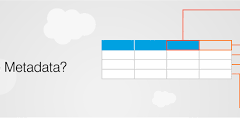Getting a handle on organizational data may not pay off until business and technical stakeholders agree on the core objectives. Connecting Data Strategies to Business Goals ensures the goals are met. Many leaders admit they need tighter alignment: Forty-one percent of line-of business leaders say their data strategy has only partial or no alignment with business objectives. Similarly, 37% of analytics and IT leaders see room for improvement. Part of the disconnect may stem from a lack of shared KPIs. Over six in 10 analytics and IT leaders are in the dark about line-of business teams’ data utilization or speed to insight. Fewer than one-third of analytics and IT leaders track the value of data monetization. This raises the issue of whether the majority of teams can effectively quantify the ROI of data initiatives for business stakeholders in the first place.
Bring together known and unknown data from all your sources, for a true 360 customer view.
Connecting Data Strategy to Business Goals: A 5-Step Approach
1. Identify Business Objectives and Goals
Start by clearly identifying your organization’s business objectives and goals. Review your mission statement, conduct a SWOT analysis, define SMART goals, and engage with stakeholders to understand their priorities. Prioritize these goals based on their importance and impact.
2. Assess Current Data Landscape
Conduct a comprehensive assessment of your current data landscape. Perform a data inventory, assess data quality, identify any gaps, evaluate data governance policies, and determine your organization’s data analytics capabilities.
3. Identify Gaps and Pain Points
Identify gaps and pain points by conducting a gap analysis, analyzing customer feedback, reviewing operational processes, evaluating data analytics capabilities, and engaging with stakeholders. This step is crucial for tailoring your data strategy to address specific needs.
4. Develop a Data Strategy
Develop a data strategy aligned with your business goals. Define your data vision, identify relevant data sources, develop data governance policies, define data analytics capabilities, and prioritize data initiatives based on their impact. Ensure that your strategy addresses the identified gaps and pain points.
5. Implement Data Governance
Implement robust data governance to ensure the effectiveness and sustainability of your data strategy. Define data ownership, develop policies and procedures aligned with business goals, implement data quality controls, monitor data usage, and provide training to employees on data governance principles.
By following these steps, you can establish a strong connection between your data strategy and business goals, enabling your organization to leverage data effectively to achieve its objectives.
Current Trends Shaping the Future of Data and Business Strategy:
- Rise in Artificial Intelligence (AI) and Machine Learning (ML) Implementation:
- Organizations are increasingly leveraging AI and ML for data analysis, extracting valuable insights that play a crucial role in shaping their business strategies.
- Heightened Focus on Data Privacy and Security:
- As the volume and sensitivity of data grow, there is a heightened emphasis on prioritizing data privacy and security. This involves implementing robust security measures and ensuring compliance with data protection regulations.
- Growing Significance of Data Governance:
- The importance of data governance is on the rise as organizations strive to manage and control their data effectively. This encompasses the development of policies and procedures for data management, ensuring data quality, and promoting data literacy throughout the organization.
- Integration of Data and Analytics into Business Processes:
- Organizations are progressively integrating data and analytics into their core business processes to enhance decision-making. This integration extends to areas such as product development, marketing, and customer service.
- Enhanced Collaboration Between IT and Business Teams:
- Recognizing the need to align data strategy with business objectives, organizations are fostering increased collaboration between IT and business teams. The establishment of cross-functional teams facilitates joint efforts in identifying opportunities and developing data-driven solutions.
What are the 6 key components of a data strategy?
These components may differ among data assets depending on their priority and relationship to institutional goals and operational needs.
- Data Acquisition.
- Data Governance.
- Data Quality.
- Data Access.
- Data Literacy and Usage.
- Data Extraction and Reporting.
- Data Analytics.
An investment in data strategy is an investment in the achievement of your company’s strategic vision.













